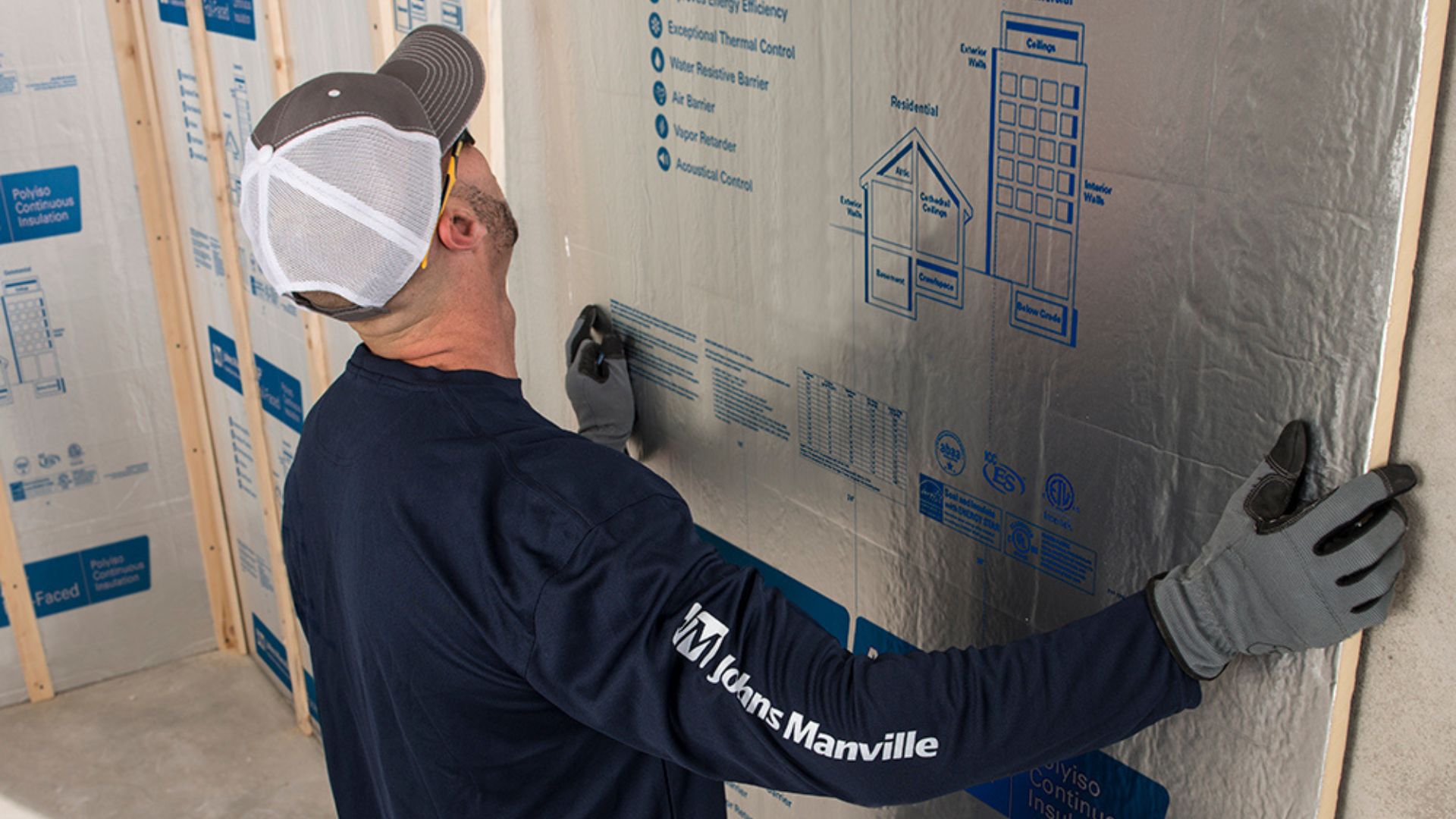When it comes to commercial building insulation, there are a lot of choices, so how do you know what to use and where? The list of options can be overwhelming, but we can help you choose the perfect Johns Manville product for your commercial application. Keep reading for more on these stars of the show and commercial building insulation overall.
The purpose of commercial building insulation
First, the simple yet all important question – what roles does insulation play in a commercial building, and why insulate?
Insulation does several important things in commercial building settings. It provides thermal control, sound control and also offers fire protection in some cases. These are all important factors to consider.
Thermal control is the most common benefit associated with insulation – a basic but important role. Insulation helps keep buildings warm in cool weather and cool in warm weather.
Acoustical control is often an important component in commercial spaces like offices, hospitals and schools. Insulation improves the Sound Transmission Class (STC) rating of a wall. This is how much sound is stopped by a wall, going from room to room, and measures how well a wall will deliver privacy between things like offices, hotel rooms, hospital rooms, apartments and more. It’s important to note that STC ratings apply to a wall as a whole, and by adding insulation to a wall structure, the STC rating is improved.
Lastly, there is fire safety to consider. Insulation and other building products are required to meet certain fire safety standards which increase the amount of time occupants have to get to safety in the event of a fire. For example, insulation options like fiberglass and mineral wool have high fire resistance ratings.
Types of commercial insulation
The biggest players in insulating commercial buildings are fiberglass batts and rolls, mineral wool, polyiso continuous insulation and closed-cell spray foam.
- Fiberglass batts and rolls are great for thermal and acoustical control. Fiberglass has a strong fire performance rating, passing ASTM E84 standards with a flame spread of less than 25 and smoke development at less than 50 (for unfaced and FSK-faced insulation). Fiberglass is also considered a non-combustible product, passing ASTM E136 standards. Kraft-faced fiberglass is flammable, however, so remember it requires a gypsum-type finish over it for fire safety. Fiberglass comes in a variety of R-values and is available unfaced or with a variety of facings, depending on the need.
- Mineral wool is made from fibers derived from the volcanic rock basalt. In interior walls, mineral wool prevents flame spread from room to room or floor to floor. Mineral wool is excellent in exterior walls for perimeter fire containment.
- Polyiso continuous insulation is good for thermal insulation and can also create an air barrier and water-resistant barrier. JM’s AP® Foil can be used below or above grade in a building envelope, while our CI Max® can be used for exposed interior applications such as warehouse interiors.
- Closed-cell spray foam like Johns Manville Corbond® SPF provides multiple attributes in one product. It has a high R-value, acts as a vapor retarder and air sealer, plus is speedy to install. It’s a great option for builds like pole barns, shops and more.
No matter what type of commercial building you’re working on, Johns Manville has you covered. We’ve got a lot of additional resources too. Check out this Insulation Minute about fire resistance or read up on insulating for acoustics. You can also check out our commercial building envelope brochure for more on specific products.

